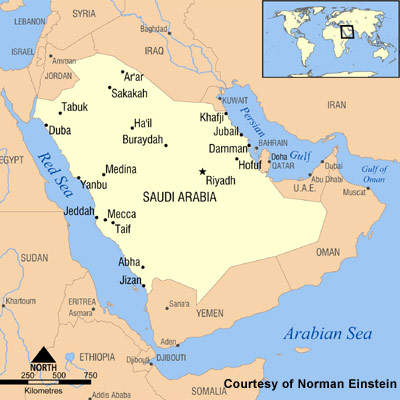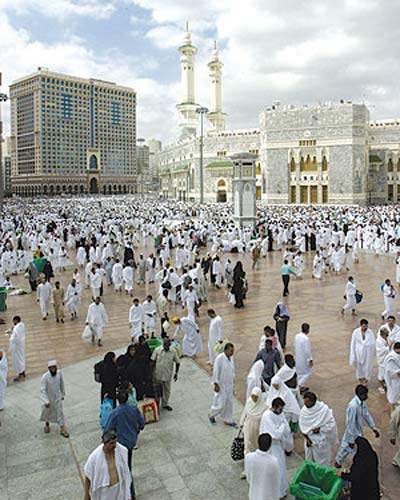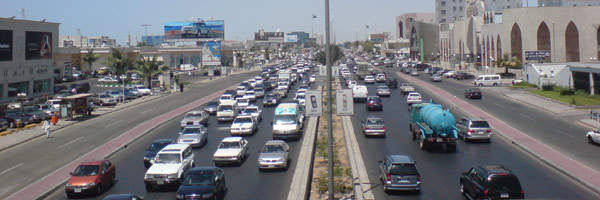The Haramain High-Speed Rail Project, announced by the Saudi Railway Organization, involves a 450km rail link between Makkah (Mecca) and Madinah. It will also pass through Jeddah and Rabigh in Saudi Arabia. Other components of the project include high-speed trains fitted with the latest equipment and five ultra-modern passenger stations – one in Mecca, two in Jeddah, one at King Abdul Aziz International Airport and one in Madinah. The project is expected to be completed by the end of 2012.
The rail track is expected to cut down the amount of time taken to travel between Mecca and Madinah to two hours. It will also shorten the travel time between Jeddah and Mecca to half an hour. Once completed, the project will provide passengers with a view of the monumental architecture of Mecca and Madinah as they travel across the cities.
Haramain high-speed rail project phases
The rail project will be executed in two phases; Phase I started in 2009. The $1.8bn contract for Phase I was awarded in March 2009 to the Al Rajhi Alliance. The Alliance is a consortium of Chinese and Saudi companies China Railway Engineering and Alstom Transport.
In April 2009, $38m worth of design contracts for four of the five train stations were awarded to a joint venture between Foster & Partners and Buro Happold. The JV will build the train stations in Mecca, Madinah, Jeddah and King Abdul Aziz International Airport.
In February 2010, a $96m contract to supervise the project was awarded to Dar Al-Handasa consultants and a $24m contract to manage the system was signed by Scott Wilson.
Scott Wilson will provide administrative consultative services to aid the Saudi Railway Organization in developing the tenders and evaluating the financial and technical offers.
Mecca-Madinha high-speed rail link
The city of Mecca is the birthplace of Prophet Muhammad and is considered to be the holiest place in Islam. With a population of 1.7 million, each year the city attracts about 2.5 million Hajj (Hajj is a pilgrimage to Makkah) pilgrims and more than two million Umrah (performing the small Hajj) performers during the month of Ramadan and seasonal holidays.
In addition, there is heavy passenger movement on Fridays along with the regular commercial traffic.
The city does not offer many public transport options to citizens, as well as pilgrims. The only options available are personal vehicles or private taxis. During the Hajj period pilgrims are transported by a large fleet of buses. The Haramain project was conceived to address the transportation needs of the growing number of pilgrims visiting Mecca, Umrah performers and the people of the city.
According to a study by the Ministry of Hajj, in the next 25 years the number of pilgrims is expected to increase to more than three million and the number of Umrah performers to more than 11 million. The annual increase is expected to be 1.4% for pilgrims and 3.14% for Umrah performers.
A train service was chosen as the best option to provide safe and comfortable travel for the pilgrims and to relieve the pressure on the roads connecting Mecca and Madinah. The project is expected to link a number of centres, boosting local businesses and tourism.
The design and construction of the project will allow it to withstand tough climatic and heavy traffic conditions. Since temperatures in the region range from 0–50°C, the track will be designed to handle the temperature changes.
Infrastructure
Phase I of the project consists of two packages, package 1 and package 2, and is expected to take up to three years for completion. Package 1 includes civil works such as construction of bridges, viaducts, retaining walls, subways, shafts, tunnels and embankments. About 500 properties situated on the railway track will be expropriated for the project.
Package 2 includes construction of the five passenger stations – Mecca Central in Mecca; Jeddah Central and Jeddah Airport in Jeddah; King Abdullah Economic City in Rabig; and Knowledge Economic City in Madinah.
Phase II of the project involves design, construction, operation and maintenance of the track, installation of signalling and telecommunication systems, deployment of rolling stock, power supply and catenaries.
Due to the fast-track construction schedule of the project, designers Foster & Partners have adopted a modularised approach for designing the stations with a high degree of prefabrication.
All stations will have a common planning strategy but will have an individual distinctive design and building envelope to represent the respective cities they serve. The stations will provide a broad range of facilities and a superior passenger experience. They will have different arrival and departure zones and ample circulation space. The public areas of the stations, along with the platforms, will be environmentally controlled to provide comfort and will be illuminated with filtered natural daylight.
Rolling stock
Renfe were awarded the Phase II contract and will provide 35 of the Talgo 350 high speed trains, capable of running at over 360km/hr. Before its official launch in 2012, pilot operations will be carried out on the track for a duration of six months.









